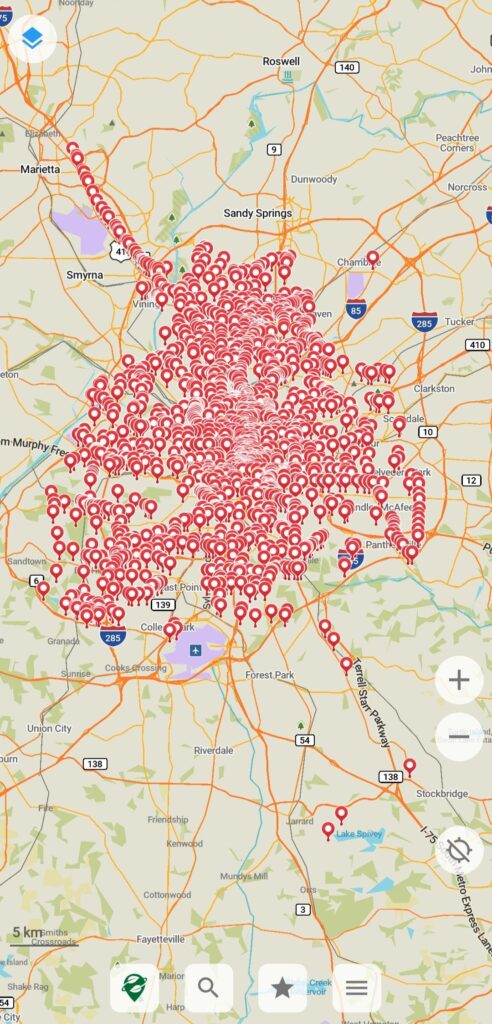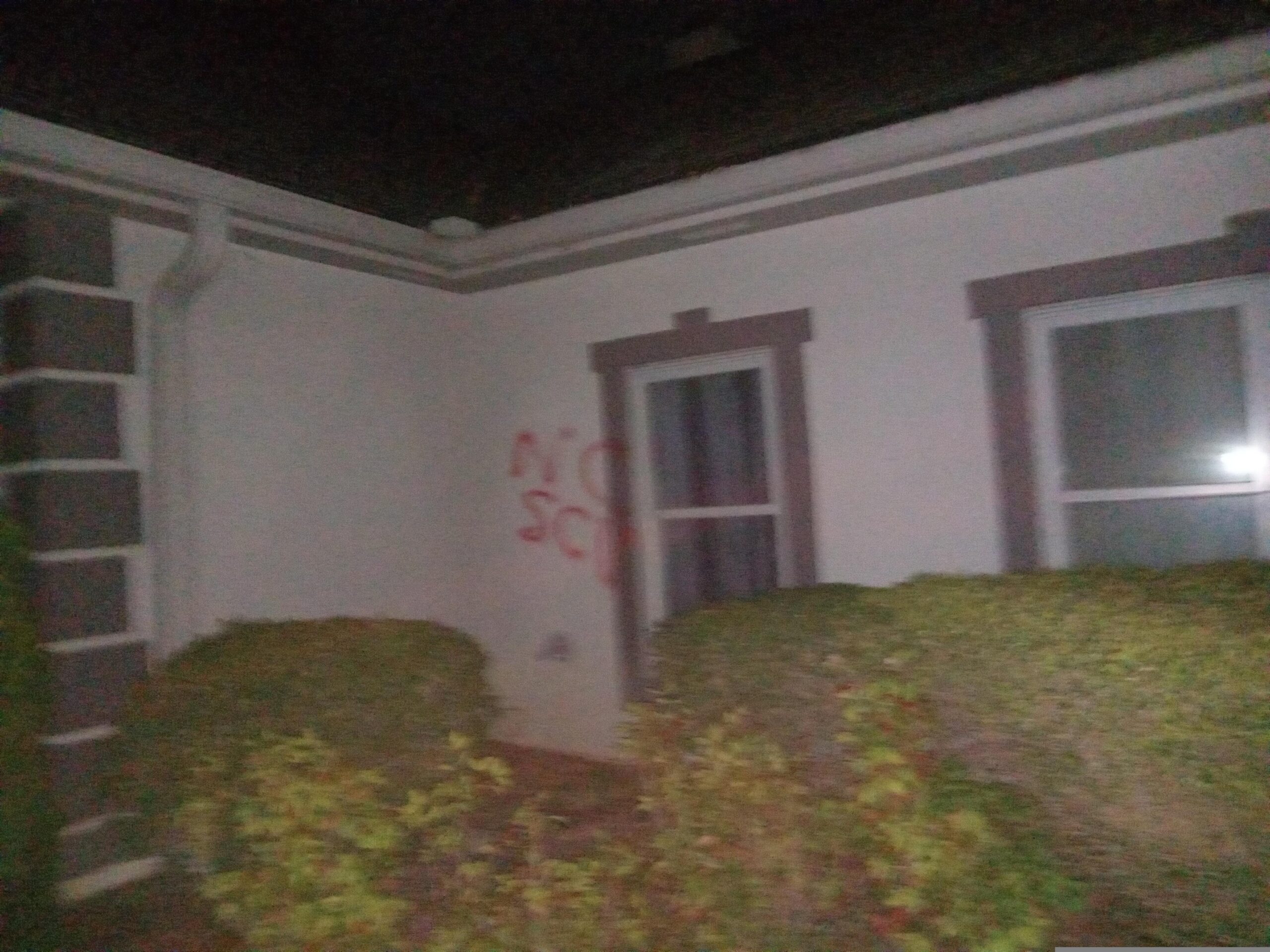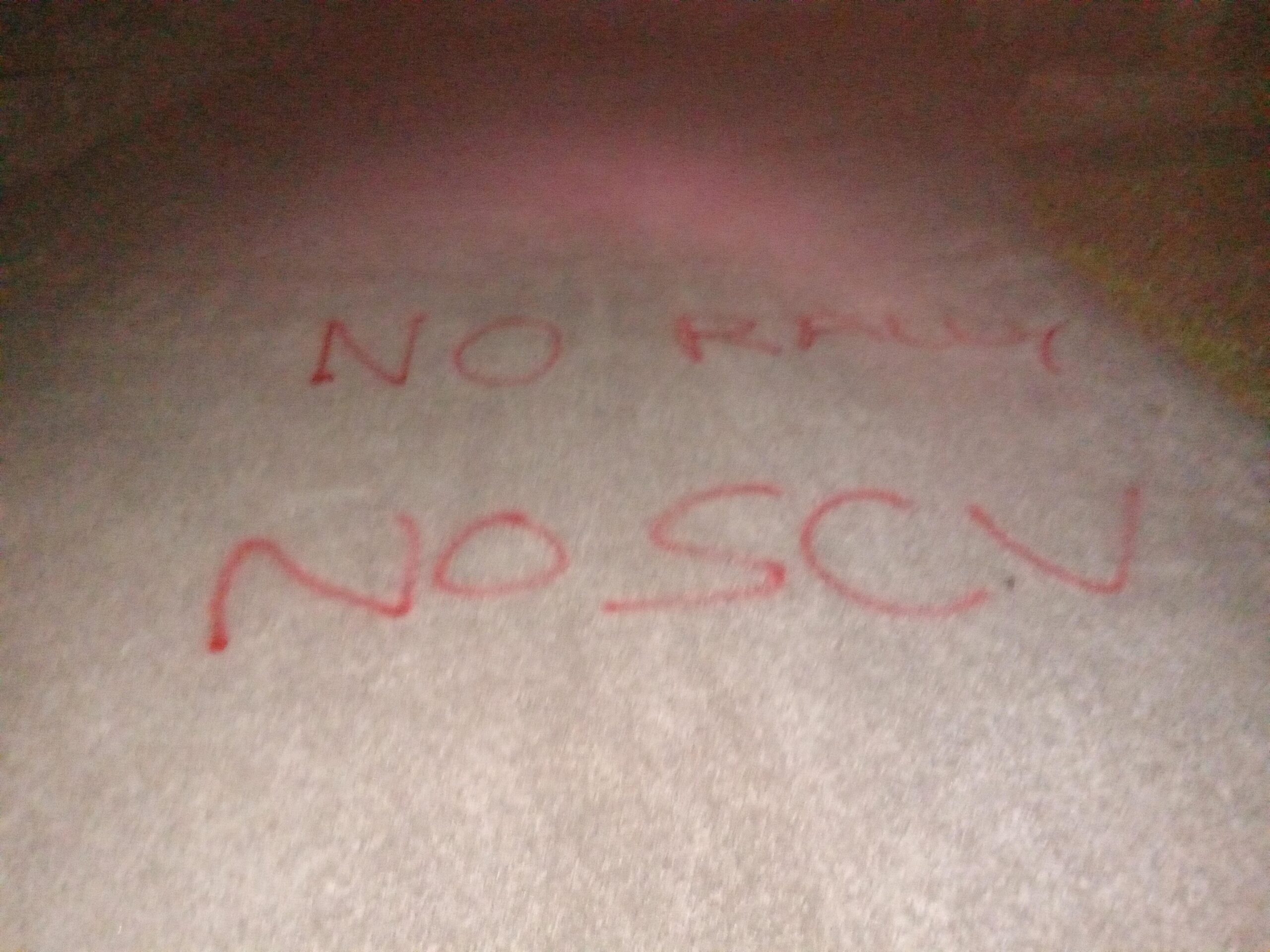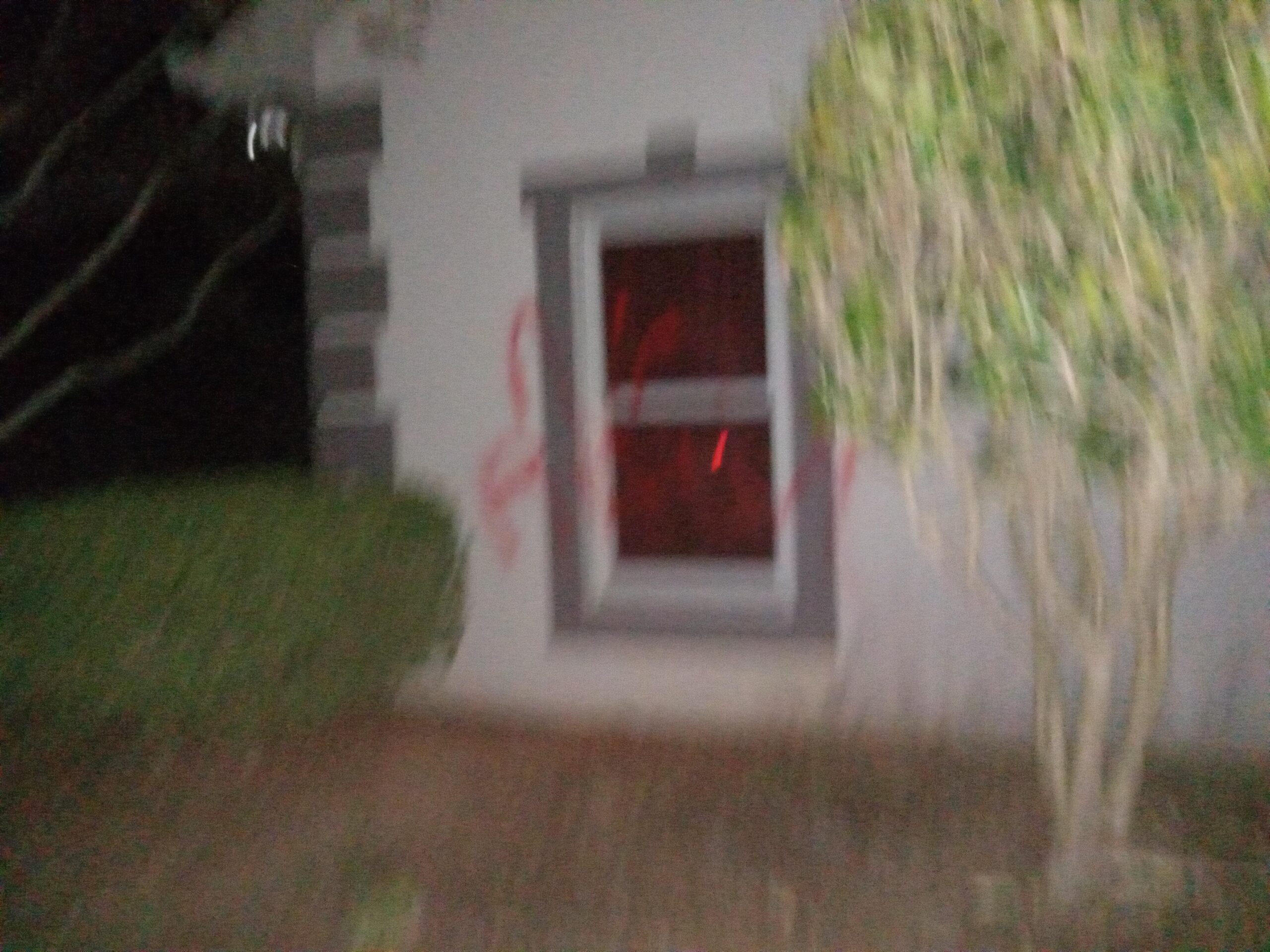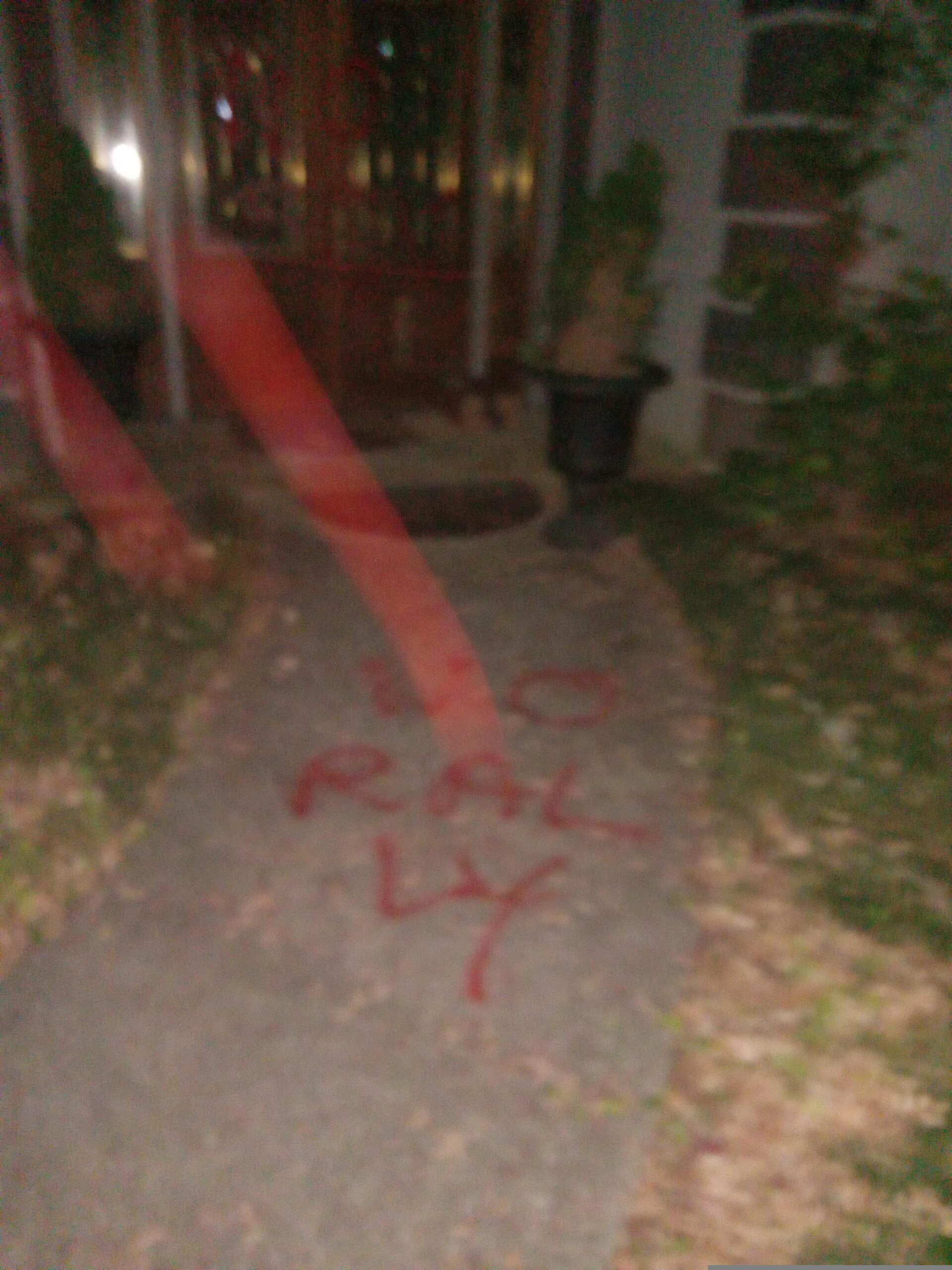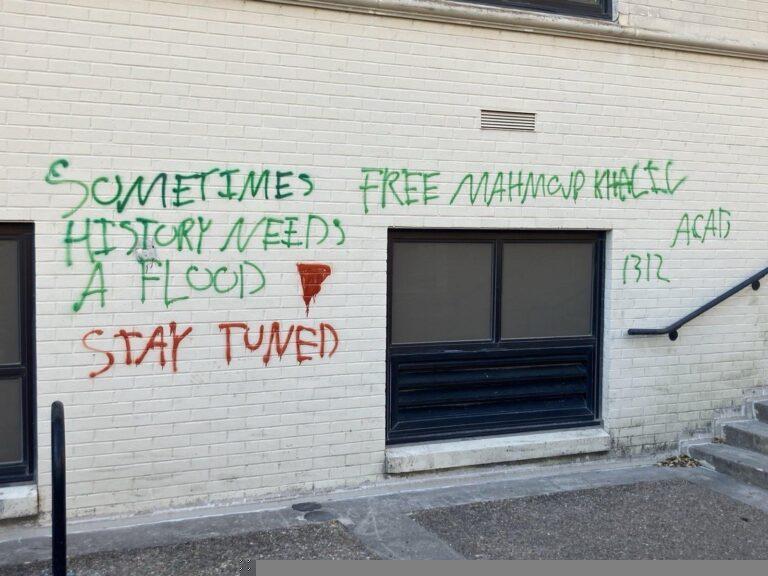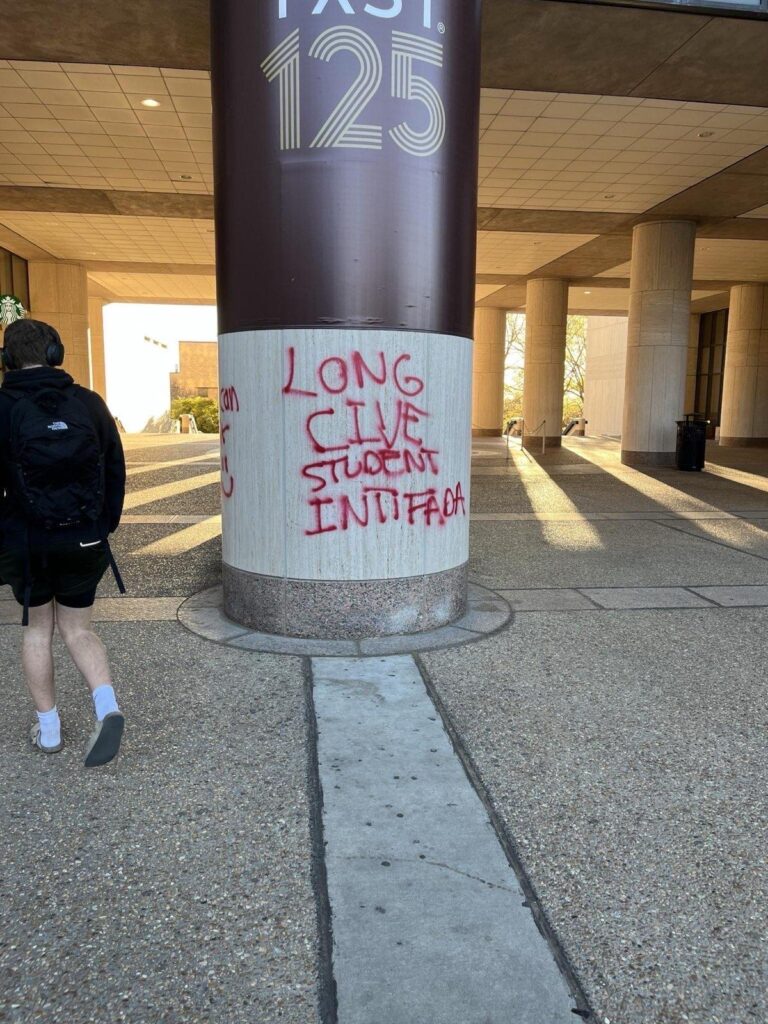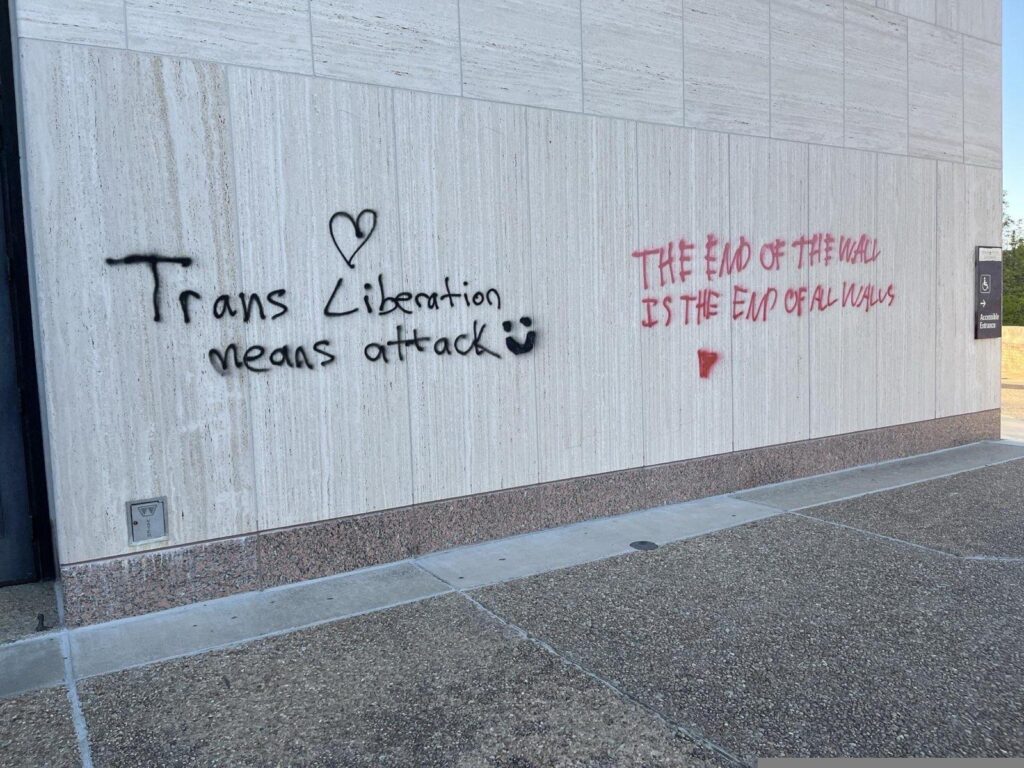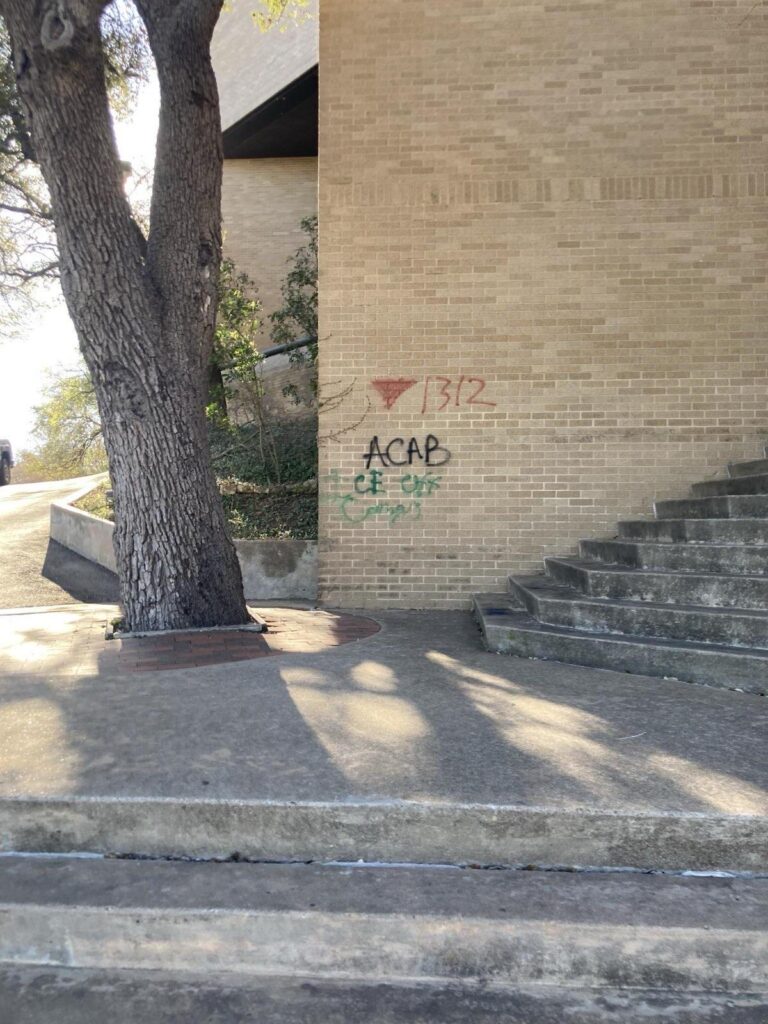
[SCREEN READING]
[PRINT]
WHAT IS FLOCK?
Flock Safety is a mass surveillance start up based in Atlanta, Georgia that promises law enforcement and private business AI surveillance, license plate reading (LPR) technology, and real time alerts. Founded in 2017, the company now claims presence in 4,000 cities across 42 states. Flock LPRs compile unique identifying car information – License Plate, Make and Model, Color, Unique Alterations, and Frequency of Visits – then stores this data for 30 days. LPRs are leased to police, businesses, property managers or Home
Owner Associations; these clients receive up to date hardware, maintenance and custom applications such as Hot List Alerts which allow them to track any vehicle(s) they desire in real-time. Flock boasts about its ability to identify a “vehicle fingerprint” which it claims includes color, make, model, bumper stickers, roof or bike racks, after market wheels, major scratches or dents, etc.
Standard Flock cameras cover 1.5 lanes of one-directional traffic up to a distance of 75 feet. They use a 16mm 1/2″ lens with an IR filter, meaning the field of view is quite large but low-resolution. For night surveillance, they are outfitted with 6 LEDs that flash infrared light into the field of view. They use solar panels for power and an LTE modem for sending and receiving data.
Flock uses a motion detector to detect a vehicle or other movement in a certain part of the frame. Then, its camera snaps a series of 6-12 photos which are sent to Flock servers where the AI logs license plate and car details. This is stored for 30 days in Flock’s servers, however once downloaded from Flocks system, clients can store this data indefinitely. Photos have added contrast and sharpening to discern plate characters. Vehicles can be flagged by the Flock system and stored for longer periods of time, as well as tracked across multiple Flock feeds, meaning law enforcement can track vehicles traveling across the city, or across the country in real-time.
Flock also offers an operating system that can be integrated with third-party hardware and software, allowing independent entities to register their surveillance cameras with Flock, and contribute pictures, live video, audio, and other data to be collectively analyzed using AI in Flock’s databases. They also offer an option to cover upgrade or installation costs if you register your independent device with their “Community Camera Registry.”
For standard clients, the cost of installing a Flock includes an installation price plus an annual subscription which covers LTE services used by each camera and access to Flock’s AI software suite. Below are the installation and replacement costs:
– Standard installation (including pole): $650-$1250
– Installation (if it is mounted on an existing pole, like a telephone pole): $150
– Camera replacement in the case of damage, theft, or vandalism: $800
– Pole replacement in the case of damage, theft, or vandalism: $500-$2000
– Solar panel replacement: $350-$500
Some new AI additons to Flock recently include Plate Swap Insights: Flock’s system now identifies when the same license plate has been spotted on multiple vehicles over the past 30 days, making it easier to detect and thwart these deceptive tactics.
Additionally, instead of manually sifting through thousands of images, users can now search for vehicles with unique characteristics, such as “blue SUV with a racing stripe” or “white F-150 with a ladder in the back.”
There are many concerns with the increased surveillance state and what that means for us in the current climate. Flock license plate reader data could potentially be subpoenaed by Immigration and Customs Enforcement, and used in states with abortion bans to subpoena information track if someone sought an abortion in a different state. Readers may be more likely to be installed in Black neighborhoods, which have historically had more negative interactions with cops.
Flock has recently also started venturing into drones. Last year, Flock acquired Aerodome, a little-known 17-month old startup, for $300 million. The Aerodome system determines if a 911 call warrants a drone response and sends a drone to the location in less than 3 minutes. The drone can be deployed from
a remote location.
NOTE : one article said the annual subscription fee for flock in 2023 was 3K, another said 2,500
HOW TO ENGAGE?
There are multiple ways to navigate the ever-increasing prevalence of AI surveillance and license plate readers. In additional to outright removal, which this zine discusses, there are preventative measures you can take to minimize the chance of your information being collected by Flock cameras.
Avoid them. On regular routes that you take, begin noticing where Flock cameras are. There are almost always ways to dodge their range, by going around the block, dodging in to a parking lot then coming out further down, or changing lanes. Flock cameras only cover 1.5 lanes, so if a road is wider than that, there are likely blind spots. The standard Flock cameras can capture images up to 75 feet.
License plate alterations. Bike racks that cover your license plate work well. Another option is tinted (and/or scratched or smeared) license plate covers, available at any auto parts store. Removal of your license plate is a third option, which could include replacing it with a “tag applied for” paper or a different license plate. All of these options carry their own benefits and risks.
Car bloc. Since Flock cameras record a “vehicle finger print” which includes bumper stickers, after-market alterations, bike racks, dents, and scratches, you could theoretically add or remove identifying items for short periods of time to confuse the AI. Examples include magnetic bumper stickers, drawn on scratches
with a window marker, or duct tape on your bumper, to name a few. It is unknown how well this works in practice, but is an idea to play with and explore further.
Shorter term immobilization. Destroying Flock cameras can be an action in and of itself, to incur costs on Flock Safety, on Flock clients, and to chip away and the surveillance state. However, Flock cameras may need to be immobilized to clear an infiltration/exfiltration route for another action. In this case, outright removal works, but more subtle options – such as spray painting the lens, putting a sticker over the lens, or tilting the camera away from the road – may be preferable.
As far as more legal disruptions:
A phone zap campaign to city commisioners in Humboldt county was successful in preventing the installation of Flock cameras.
Cops getting Flocks installed near Portland, Oregon on state highways and freeways without permission resulted in the state telling Flock it needs to remove the cameras and any related equipment because the company does not currently have a permit to install or operate cameras within state highway and freeway rights of way.
A federal complaint was filed in Norfolk which contends that the city’s use of the cameras violates the U.S. Constitution’s Fourth Amendment rights, which protects American citizens from unreasonable searches and seizures by the U.S. government. The results of this suit are still tbd.
As Flock cameras have multiplied around the country, people have taken this encroachment upon our privacy into their own hands. There have been multiple instances of destructions of Flock cameras as of late:
Atlanta, GA.
On April 28, 2024, an anonymous communique was posted to
scenes.noblogs.org, titled “5 Flock and 1 APD street camera disabled.” The
authors experimented with various ways of destruction, concluding that “none
were uniquely superior to another.” They stood on each others shoulders
and smashed one with a hammer; dislodged one from the ground by pushing
and pulling the pole back and forth (which they claim takes 15 seconds to 5
minutes), then smashed it with a hammer; they smashed the solar panel of
one; and they spray painted the lens of two more.
On October 15, 2024 a communique was posted titled “23 Flock
Cameras Disabled in Atlanta, GA.” Methods included disassembling the pole
using a T27 security drill bit (available at hadware stores), cutting the tin bands
that holds the camera to the pole, and spray painting the camera lens.
Savannah, GA.
People in Savannah posted an anonymous communique on July
21, 2024 titled “6 Flock Cameras Destroyed in Savanah.” Methods included
standing on each other’s shoulders and smashing cameras with hammeras and
bricks, cutting the brackets that attach the cameras to the pole with tin snips, or
ripping the cameras off the poles with their hands.
Traverse City, MI.
in Michigan smashed 6 Flock cameras, per an annonymous
communique posted on August 13, 2024.
Seminole County, FL.
Absent a communique, there is also a man in Seminole County Florida
allegedly responsible for taking out 22 Flock LPR’s in his community. He is
reported to have used a battery powered drill and knife, and notably used
different methods of transportation (multiple cars and a bike). News sources
reported that each camera costs $4,300 to replace, meaning he destroyed
nearly $100K of Flock products. He was arrested and charged on June 1, 2024.
If this is an approach that interests you, here are some considerations:
Flocks are unidirectional, meaning they’re vulnerable from behind, but are often paired with another flock in the opposite direction (common on busy streets or highways), or with nearby dome cameras (especially in dense urban settings). Be mindful about your approach.
Scout both the camera and the entry and exit route, from the moment you leave your house to the moment you return. Make sure that you aren’t seen changing clothes or entering/exiting a vehicle on a camera.
Flock cameras are outfitted with a taoglass GPS module, meaning they do have geolocation technology on-board. This mean the company can potentially access where components were brought to or ended up even after being damaged or disassembled.
Flock cameras, at least older ones, contain an audio kit. Flock also sells gunshot detecting audio surveillance tools. It is unclear if standard Flock cameras use the gunshot detecting tech, or where the microphone would be, but this is something to pay attention to.
Cameras and solar panels are frequently more than 8 feet off the ground. Whether you plan to use a ladder, bike or a friend, we recommend practicing the maneuver ahead of time. While it may seem simple, the benefit of a little practice can’t be overstated. Some flocks are placed higher than others, so it can be beneficial to come with a backup plan of what you might do if your plan A is out of reach.
The aluminum band attaching the camera to the pole is often snug, and any tools used to cut or pry should be small enough to wiggle in.
The lens is covered in a small pane of glass, and the numerous lights around the lens are infrared lights. When destroying the lens, make sure to break the glass and then smash again to break the lens.
Standard Flock cameras use motion detection to take a short burst of photos when movement similar to vehicle traffic is detected in certain part of the frame (this includes bicycles). They are not taking video as you pass them on foot, but you can end up in a photo taken of a vehicle/object/your hammer.
Remember: you haven’t done anything illegal until you have! At any point, if the vibes are off, you can call it off!
Previously it has taken Flock up to a month to replace broken or missing cameras.
Recommended Materials (pick and choose):
Various things to cover yourself with: gloves, mask, bandana, sunglassses, hat that conceals your browbone and hair, undistinguisable clothing
Various things to cover the lens as you work (optional): cloth, opaque plastic bag, spray paint
Various things to disassemble parts:
camera/ camera band: tin snips, hammer/crowbar, cordless drill
solar panel: rock in sock, rocks, hammer, cordless drill
pole: angle grinder, cordless drill with a T27 security bit
Various things to smash parts: brick, rock, hammer, emergency windshield breaker tool, slingshot, sling
*** Make sure any materials you use are treated with the potential of identification in mind (think fingerprints, cut marks left by tools, and microscopic glass shards in clothing). Consider where they are acquired, where they are stored, how they are handled and cleaned, and where they are disposed of.
Happy hunting.
Competitors in the field:
– PlateRanger by Rekor (integrates with ShotSpotter and, in 2025, CrimeTracer)
– Vigilant VehicleManager by Motorola
– AutoVu by Genetec
– Matrix by InSight LPR
Industry indications of cross-provider integration and database sharing beginning in 2025
USEFUL LINKS FOR FURTHER READING
Surveillance under surveillance- global open source map of cameras in your area https://sunders.uber.space/en
Center for Human Rights and Privacy- dissection of Flock camera parts https://www.cehrp.org/dissection-of-flock-safety-camera/
Deflock me- find nearby ALPRs in your area https://deflock.me/
fuck flock 2025
Submission
Source: Unravel

